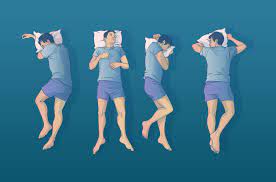Sleep apnea can be described as a sleep condition in which the body’s respiration stops for a brief period in sleep, and then it resumes abruptly, leading the patient to scream for breath and choke or take deep breaths when they wake up.
Sleep apnea can be diagnosed by its symptoms, like louder-than-average snoring or fatigue after waking awake, waking suddenly after gasping or choking, a sore throat as well as night sweats. Patients with the condition tend to be more prone to suffer from cardiovascular myopathy, hypertension, and heart failure. This is also observed more frequently in those obese, suffer from diabetes, or with structural problems in the neck.
There are many effective ways to treat sleep apnea. The most commonly used and most effective is by using constant positive airway pressure (CPAP) therapy. It is the practice of wearing a mask around the mouth and nose when you sleep, which is inflated to the throat and keeping it from collapse. This way, the airways remain open even during apneic episodes, and the patient can have a restful sleep. There are, however, potential health hazards associated to the PE-PUR type foam employed by a few CPAP machines to dampen the vibrations and noise it creates.
The particular type of foam can be degraded into particles that can be absorbed by the mechanical ventilator’s path and be inhaled or breathed in by the patient. Ingestion of these substances is linked to the onset of lung issues among a variety of customers, and this has resulted in lawsuits over the last few years. For more details on lawsuits involving the CPAP recalls, visit Schmidt & Clark.
Sleep apnea is divided in two categories that are central and obstructive sleep breathing. For sleep apnea that is obstructive, the respiratory muscles area that help breathe like the chest and throat muscles feel too much strain in order to keep the airways open. This leads to reduced blood pressure as well as less oxygen getting to vital organs. In contrast central sleep apnea can be caused by issues in the nervous system that cause the brain to fail to transmit signals to the lung to continue functioning.
In the case of mild conditions of sleep apnea treatments that are conservative can be applied to the patient like losing weight, changing sleeping positions, or using humidifiers and nasal sprays before going to bed. Changes in sleeping position is the most straightforward option of these, and is applied right away. The following positions for sleeping are suggested by medical experts to help ease sleep apnea as well as decrease the frequency of sleep interruptions.
1. Prone Sleeping (or Stomach Sleeping) Position
The prone (also known as stomach sleep) is defined by lying on your stomach and the body’s front lying flat against the mattress. This is among the sleeping positions that are less well-known however it is still effective. When in this position tongue and soft palate don’t slide down the throat because gravity pulls them toward the mouth opening. This allows for the passageway of air into the throat, thereby reducing the risk of developing apneic symptoms. The only drawback to this position is that the muscles that run along the neck’s back are stretched, so switching positions regularly is advisable. A light cushion is an ideal option to ease tension to the neck as well as prevent stiff necks due to this position. Additionally, the proper positioning of the pillow must be made so that it does not block the nose and mouth while you sleep.
2. A Pillow Hugger to Sleep Position
The act of hugging pillows when you sleep laterally is a great way to reduce the risk of apnea during sleep. The position of sleeping on your back is an ideal position since it reduces tension on airways in the throat, and aids in increasing blood flow to many organs. It also makes the muscles of the upper part of the body feel more relaxed because of the pillows that cushion the weight of the upper body muscles.
3. Sleeping Position Left-Side
If you sleep on your left side, it is a good option, not just for preventing sleep apnea, but also decreasing the amount of gastrointestinal reflux. Acid reflux can be an important role in the development of sleep apnea because stomach acid may cause obstructions of the airways. If you reduce the risk from acid reflux, risk of suffering from an apnea episode decreases. This is the reason why sleeping on the left side is an ideal option, especially if suffer from sleep apnea. The left-side position with your back in a straight posture is recommended as it increases the circulation of blood and reduces the possibility of obstruction to the airway. A large pillow that supports the neck and head is suggested when sleeping to the left.
4. Sleeping Position Right Side
The one side offers many advantages over resting on your left. When you sleep on the right side it reduces the pressure and weight that is felt by the heart and the lung on the left decreases, and it can make it more comfortable those who suffer from heart conditions that go together with sleep apnea. When you sleep with your right-side of the body it can help the heart to feel more relaxed, and could aid in treating sleep apnea.
5. Sleeping position that is in a reclined position
A back-sleep position is probably the most uncomfortable position for people suffering from sleep apnea. However, for some with joint pains, it’s the only choice. To help improve the posture, tilting the upper portion of the bed is an ideal position to sleep in regardless of sleep apnea. Because the upper part of the body can be slanted, this decreases the slide of the tongue and soft palate backwards into the throat. This can also help in reducing acid reflux during sleep. To keep the airway open, using pillows that are wedge-shaped and made from foam is recommended. Avoid pillows with a soft texture because the purpose is to raise the head.
Combining these positions of sleeping could aid in improving sleeping for those with sleep apnea. Apart from that, sustaining the right sleeping habits and hygiene is vital to ensure an excellent night’s sleep. It is also beneficial to create a setting which encourages sleep by altering the temperature of the room according to your preferences, while making it easier to sleep and utilizing an uncluttered and comfortable mattress or bed.















